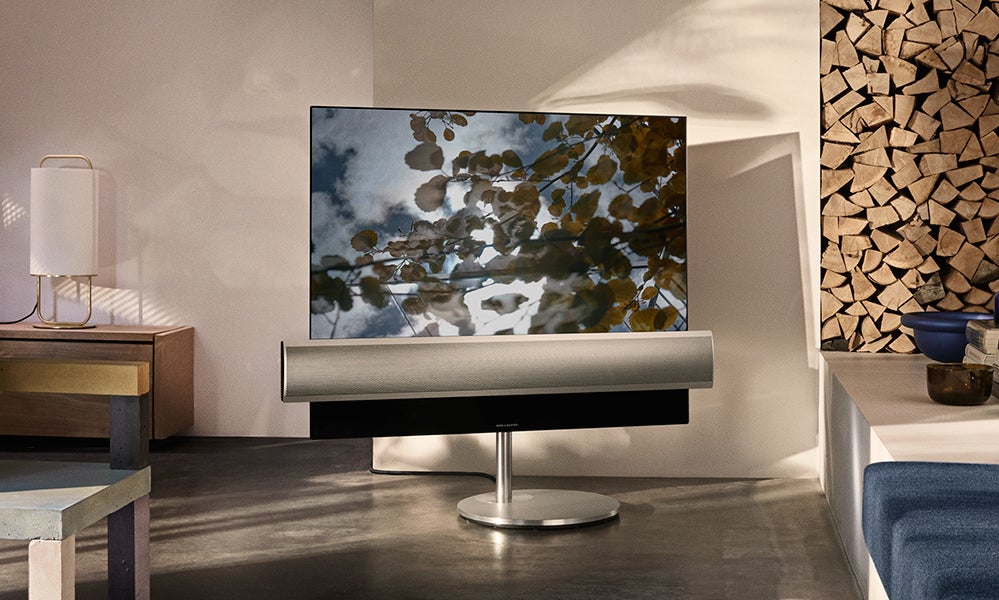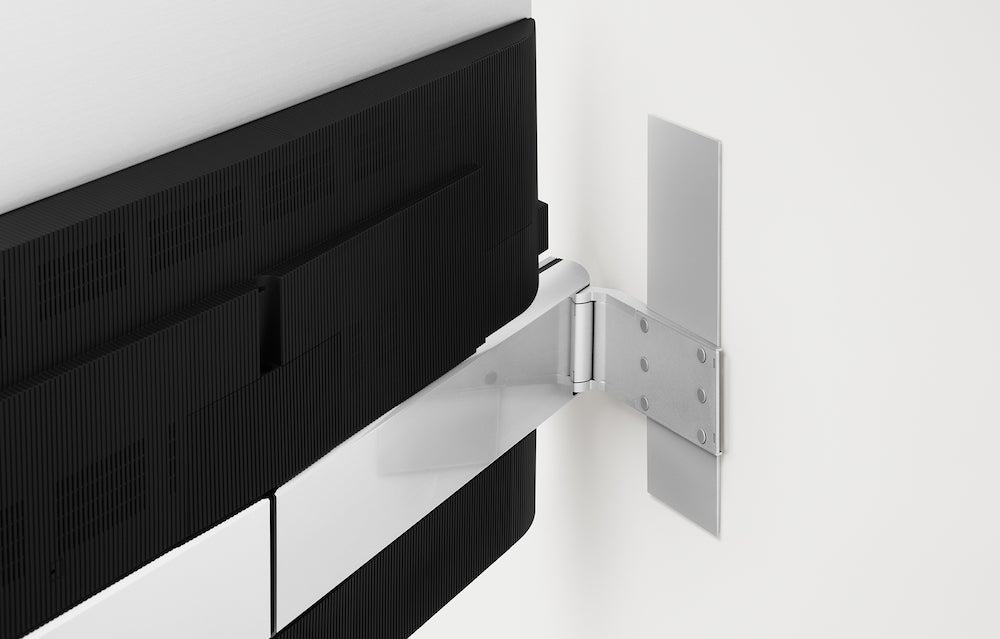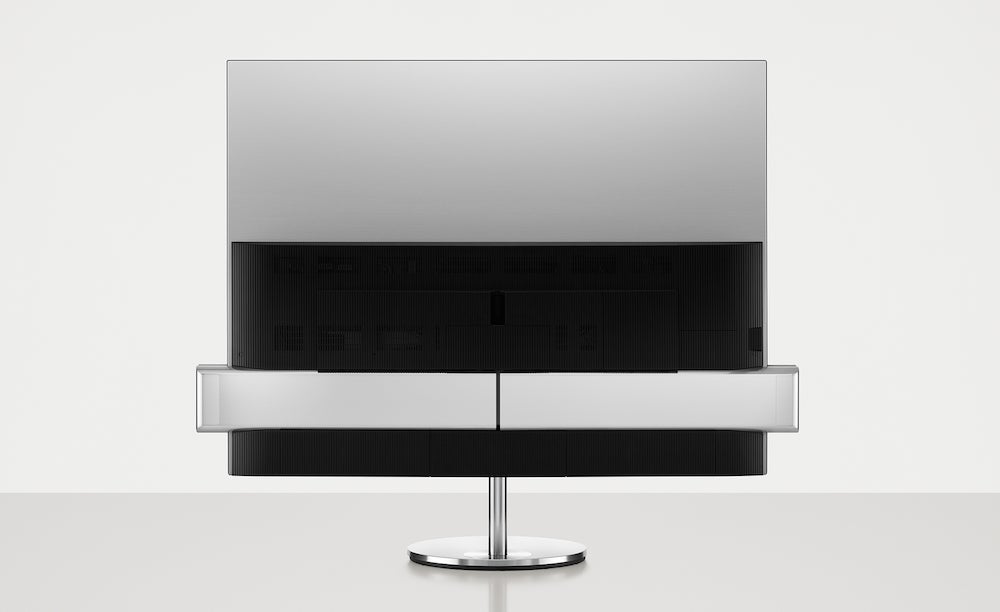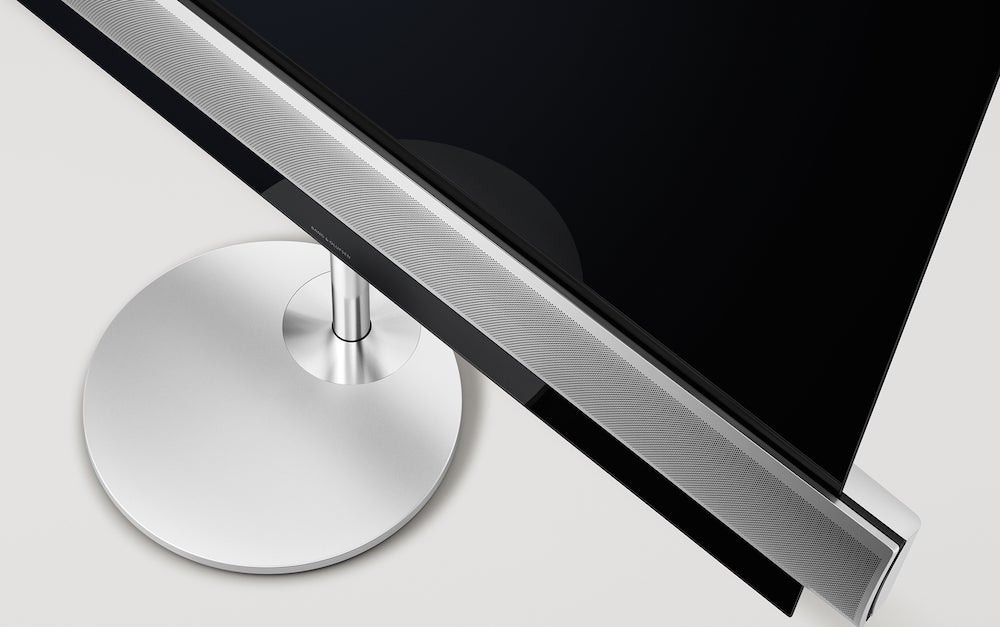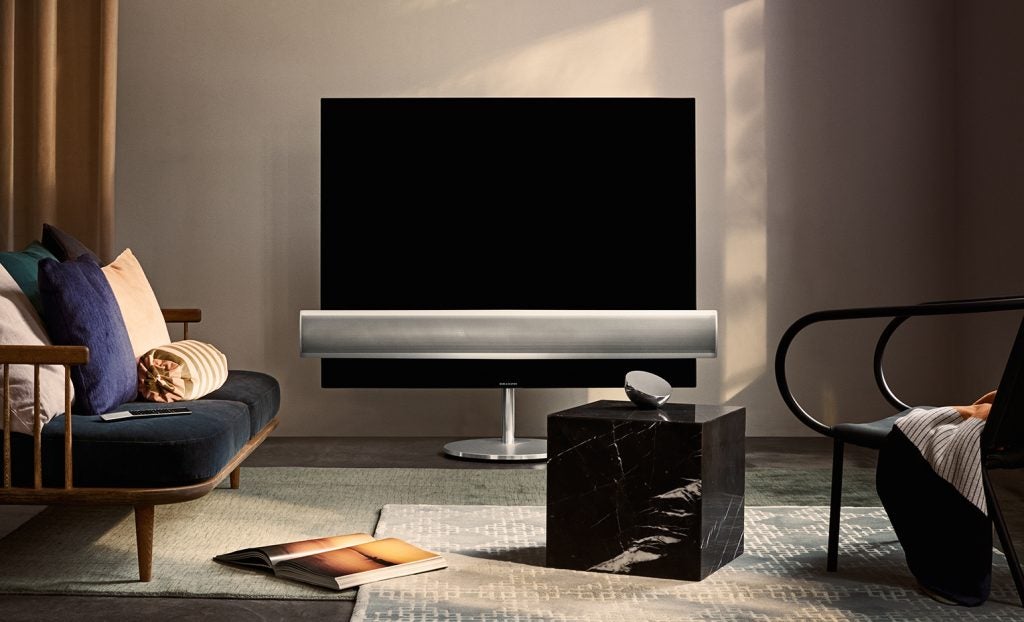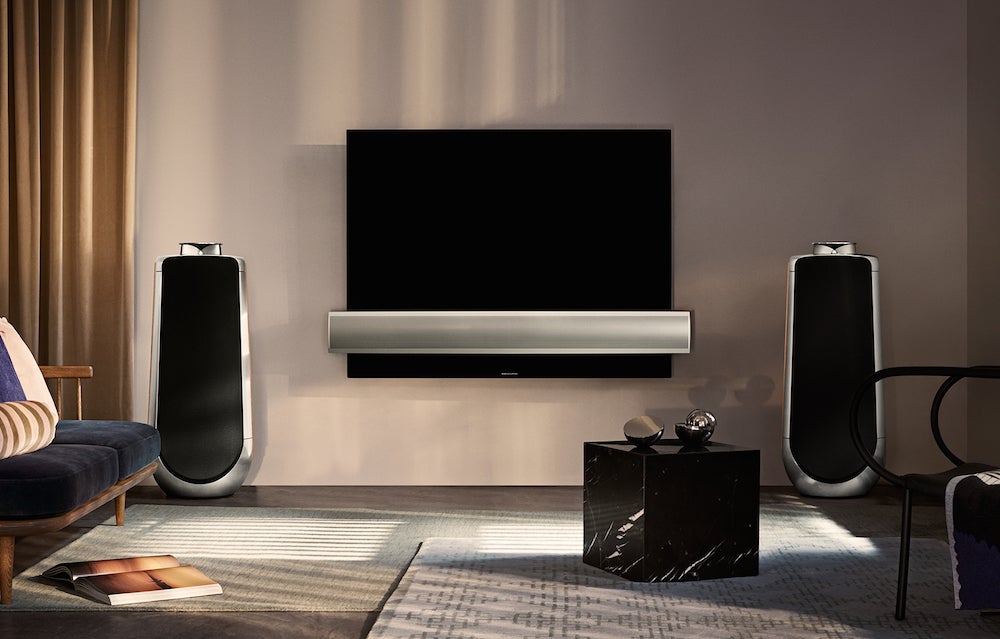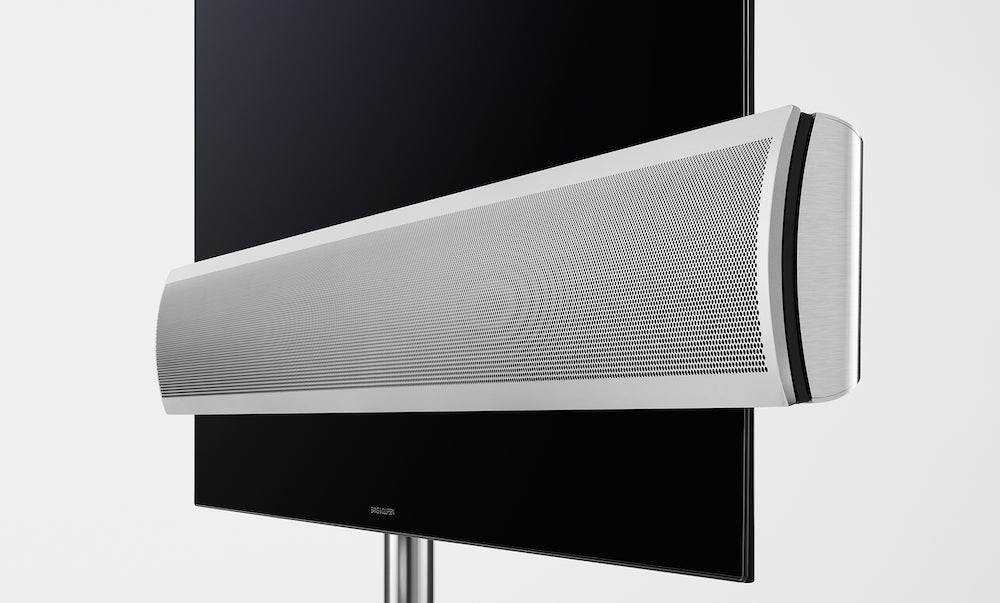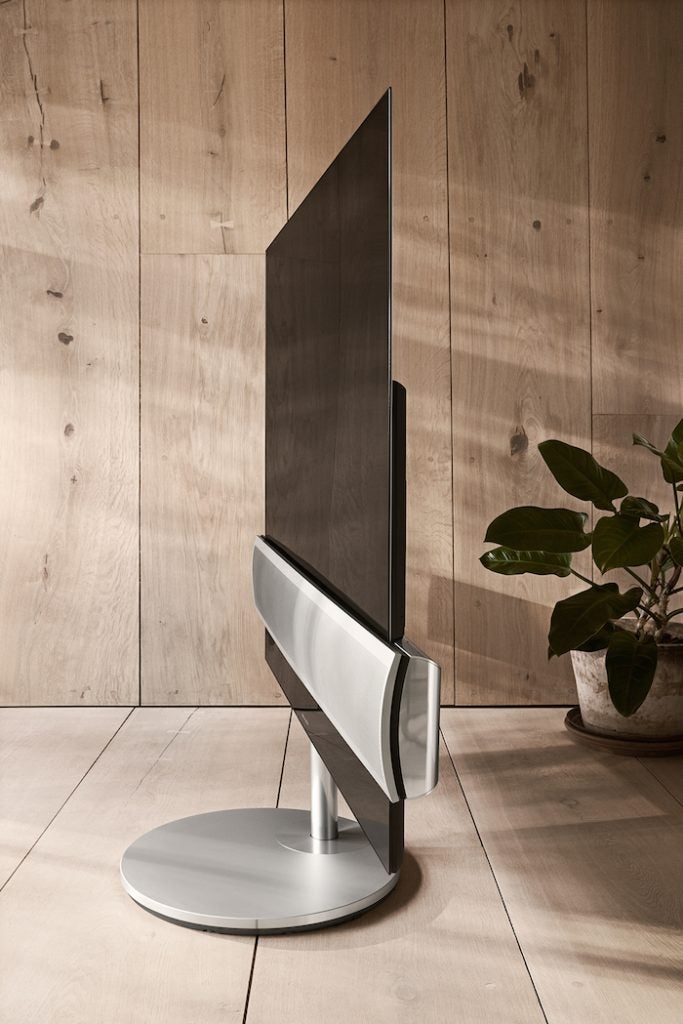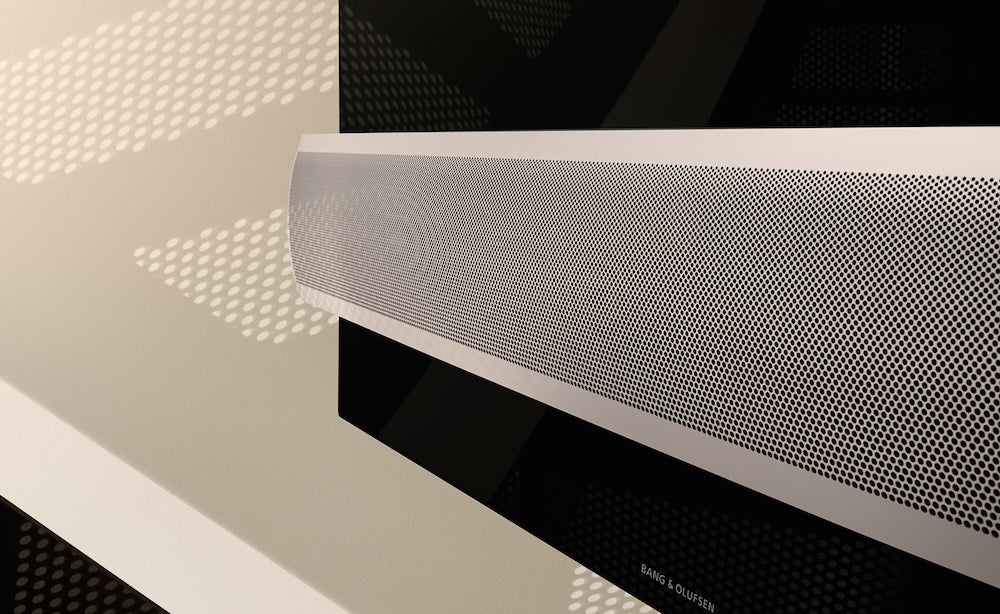B&O BeoVision Eclipse Review
B&O BeoVision Eclipse
Say hello to the world's most luxurious OLED TV
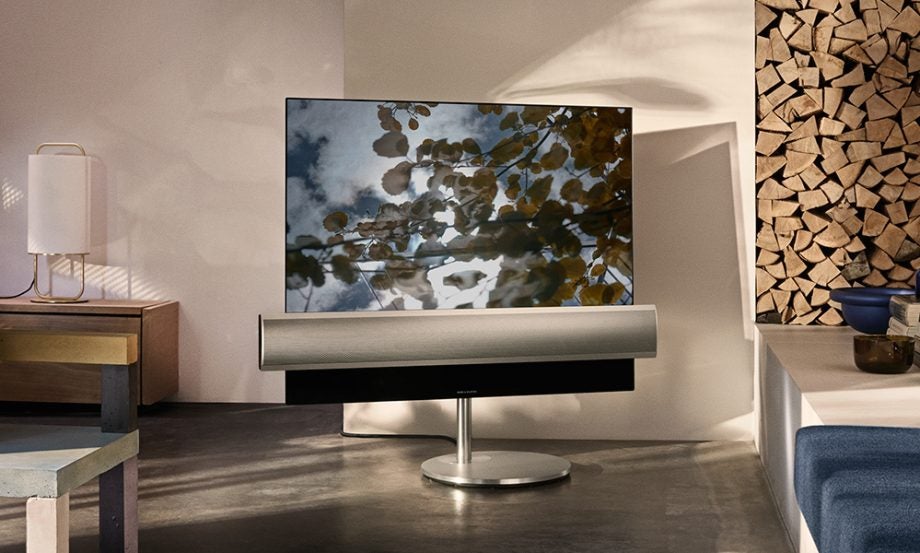
Verdict
Pros
- Spectacular design and build quality
- Class-leading built-in sound quality
- Stunning OLED picture quality
Cons
- It's expensive
- It can be complicated to use in some areas
- Not as bright for HDR as LCD TVs
Key Specifications
- Review Price: £7495
- 55-inch OLED TV
- Native 4K resolution
- Support for HDR10 and Dolby Vision HDR formats
- Various mounting and design options available
- 450W 3.0-channel soundbar built in
What is the B&O BeoVision Eclipse?
The B&O BeoVision Eclipse series is the Danish brand’s first range of OLED TVs. Available in 55- and 65-inch versions, the Eclipse delivers a native 4K resolution and HDR support – including Dolby Vision. In typical B&O fashion, it also combines the joys of OLED picture technology with a motorised stand, multiple design options, a monstrously powerful sound system and… a budget-busting price tag.
Related: Best TVs
B&O BeoVision Eclipse – Design and build
The B&O BeoVision Eclipse doesn’t look like any other OLED TV. It eschews today’s ‘less is more’ trend by slotting its OLED screen into the top of a huge built-in soundbar. This boldly extends a good few inches beyond the screen’s left, right and bottom edges. The design then extends the chassis even further downwards, thanks to a dark glass section that cunningly fools your eye into thinking the screen is actually running right through the soundbar.
Each Eclipse can also be attached to a variety of different mounting options.
My 55-inch test sample was delivered with a silvery pole mount attached to the outer edge of a circular base. This looks lovely, but what makes it really cool is that it’s all motorised. You can turn the screen left or right on the pole, and rotate the circular base around clockwise or anticlockwise – all via the TV’s remote.
You can even programme the TV to rotate and angle itself to a specific position when you turn it off and on. It could turn flat to a wall when switched off, and rotate back towards you when switched on.
All the motorisation works fluidly and silently, creating just the sort of premium feel you expect from B&O.
Other mounting options include a static stand, and a stunningly engineered pivoting wall bracket. This attaches to one side of the screen and somehow makes the TV feel as light as a feather when you manually rotate it left or right.
There’s a range of different finishes for the soundbar cover too, including various felt colours and a bold metallic option. You can also remove the cover if you want to geek out at the speakers underneath.
The build quality of every element of the Eclipse is exemplary. Despite the fact that the design is achieved by literally slotting an LG OLED55C7 screen into the top of the soundbar. B&O makes no effort to hide the fact that the TV element is from LG.
The remote control is the most gorgeous I’ve ever seen. It’s hewn from polished, heavyweight aluminium, features a beautiful little OLED read-out at its top, and feels beautiful to hold.
Which is just as well, as you’ll likely end up holding it for more time than you’d ideally like. Its ‘button and display’ approach is so non-standard and often convoluted that hardly anything – even switching the TV on – feels straightforward. At least there are dedicated Netflix and Amazon buttons.
I also missed the ‘point and click’ capability and menu navigation wheel of LG’s remotes, since the webOS menus seem designed with those features in mind.
B&O BeoVision Eclipse – Features
The B&O BeoVision Eclipse is unique in the TV world for being a genuine collaboration. The screen part is an LG OLED55C7, right down to its video processing.
The webOS smart TV interface is almost all LG too. The only difference is that input selection has to be made via the remote, since all of the video inputs are piped through the B&O soundbar rather than straight into the TV.
B&O’s input comes from the set’s unique design and build quality, and the audio from its colossal soundbar.
This beast can shift a trouser-flapping 450W of brute audio power, spread across centre, left and right channels. The TV also carries 7.1-channel DTS and Dolby audio decoding, and can team up with separate external B&O speakers to create a full multichannel home cinema audio system. In such a system, the built-in speakers can retain their three-channel setup, or become a single centre channel.
There’s wireless audio support too, enabling the Eclipse to sit at the heart of a multiroom music system. AirPlay, Chromecast, Bluetooth and internet streaming are all supported.
Since the Eclipse uses one of LG’s 2017 OLED screens, its pictures enjoy the same features. There’s the same pixel-level light control that’s OLED’s trademark, along with all of LG’s various picture-processing systems. These include noise reduction, sharpness enhancement, HD upscaling to 4K, and LG’s TruMotion motion compensation.
The Eclipse matches the OLEC55C7’s 700 nits or so of measured brightness when showing a 10% white HDR window. Well-heeled gamers will be pleased to hear that its Game preset also matches LG’s 21ms of input lag.
Importing LG’s webOS platform has enabled B&O to offer the same strong range of online services you get with LG’s own TVs. This is a great move given the issues B&O has traditionally had keeping up with the latest smart TV moves.
Highlights of its smart services include the 4K and HDR versions of Amazon and Netflix, UKTV Play, plus all of the UK’s ‘big four’ terrestrial broadcaster catch-up services. The catch-up services are delivered within a Freeview Play wrapper. This brings them all together in one place, and lets you find missed shows via an electronic programme guide that scrolls back as well as forward in time.
B&O BeoVision Eclipse – Setup
Buy an Eclipse and mercifully it will be constructed and built for you by a B&O installer. I say mercifully since it was apparent during the installation of our test sample that the way the TV is designed, complete with some unique cable management systems, makes it a considerable challenge to set up. Especially as the Eclipse blends LG’s video processing and webOS smart engine with B&O’s setup menus.
While B&O was right to import LG’s brilliantly straightforward webOS smart system into the Eclipse, the way the set has to switch between webOS and B&O’s more dour, complicated menus when you’re trying to adjust some of the TV’s settings feels jarring – as well as adding an extra layer of complication. Though to be fair, it’s hard to see what else B&O could have done having gone the webOS route.
There are a number of picture tweaks I’d recommend if you want to get the best from the Eclipse’s picture quality. First, turn off the Trumotion processing. Or, if you feel that leaves excessive judder, choose User with de-judder and de-blur both set to three.
Also turn off noise reduction and MPEG blocking reduction with 4K sources. I’d also strongly suggest that you use the Standard picture preset when watching HDR. The Vivid option causes noise, and the others are too dark. Within the Standard setting, nudge the brightness up to 51 or 52.
B&O BeoVision Eclipse – Performance
Not surprisingly, given it’s built around a 2017 LG OLED TV, the B&O BeoVision Eclipse’s pictures are mostly sensational.
The classic OLED benefits are all present and correct right out of the box. Black levels look incredibly deep, and appear with no hint of the clouding associated with rival LCD technology.
Bright highlights in the picture can appear literally just a pixel away from the darkest parts without any cross-pollution.
Nor is there any need to compromise the overall contrast for shots containing a mix of dark and light like there is with LCD TVs. This helps HDR images take on a stunningly luminous, natural quality that’s kind of like real life only better.
Having mentioned HDR, it’s good to see the Eclipse largely matching the brightness levels of LG’s latest OLED TVs. It’s the brightness improvements LG’s delivered for 2017, after all, which have finally made OLED truly HDR-friendly.
Colours look beautifully rich and consistent, helped again by the OLED panel’s freedom from the sort of light consistency issues that affect LCD. Colours retain their intensity when viewed from a wide angle, too – another key benefit the Eclipse enjoys over LCD sets.
As expected, feeding the B&O BeoVision Eclipse a Dolby Vision source sees picture quality get even better. Peak highlights look brighter, dark areas look darker, and the picture just looks more refined.
While the Eclipse is at its mesmerising best with high dynamic range, 4K content, it’s also outstanding with SDR HD. The upscaling engine it inherits from LG is a big improvement on the Korean brand’s previous ‘builds’, doing a strong job of adding detail and colour refinement without emphasising noise. And while SDR doesn’t stretch the screen’s capabilities, it still looks breathtaking.
While the Eclipse enjoys the same picture glory as LG’s C7 TVs, it also suffers the same limitations. First, for me the Standard picture preset is still the only one that sensibly delivers HDR with enough brightness. Yet it can cause a little colour noise in bright, subtly toned areas, or some mid-dark backdrops. Noise which largely disappears if you use a less bright HDR preset.
Shadow detail can also become lost in the darkest parts of the picture using all the presets, even after following my earlier brightness increase tip. You can’t go higher than level 52 for brightness without the previously sumptuous black levels starting to nosedive.
You occasionally see a faint magenta tint in dark areas if your watching in a bright room. And finally, motion could be handled better. Though the setup suggestion I gave earlier yields a perfectly serviceable balance of judder-reducing processing and naturalism.
Now, some LCD TVs can deliver more than twice as much peak brightness as the Eclipse. This potentially helps them deliver more potent HDR images, with more detail in bright areas. However, these brighter LCDs can’t deliver the same sort of black level depths and uniformity the Eclipse can.
With the Eclipse, much more than most TVs, its picture quality is only half of its performance story. There’s also that monster soundbar to consider. And as you might hope given it dominance of the Eclipse’s design, it’s brutally powerful.
I don’t use the word ‘brutally’ lightly, either. If you push it to anywhere near the top 30% or so of its volume, your ears just won’t be able to take it. Not only because it can go extraordinarily loud; it also sounds rather harsh with treble.
The beauty of the Eclipse’s speaker power doesn’t lie in just turning the volume up to uncomfortable levels. Its true strength is the way it provides breathing room for the ebbs and flows of even dynamic soundtracks.
The speakers are sensitive enough to produce remarkable detailing from dense movie soundtracks – or well-recorded music. What’s more, with film soundtracks this detail is superbly positioned in the mix. For instance, as seagulls wheel above and around the action just before Moses crosses the Red Sea in Exodus: Gods And Kings, the gull calls not only sit vertically higher in the mix, but also transition left, right and even seemingly behind the TV as the birds circle.
As you can tell from this, the soundstage spreads far beyond the TV’s physical boundaries, yet never loses cohesion.
Joining the Eclipse’s movie soundtrack thrills is a wonderfully rich, dynamic, detailed and evocative music performance. So essentially you really have got what sounds like a serious separates audio system built into your TV.
I have just one small issue with the sound beyond the slight harshness that kicks in at extreme volumes. Dialogue, while rounded and rich in tone, can sound like it’s coming from slightly below the screen. Especially if you’re sat quite close to the TV.
Why buy the B&O BeoVision Eclipse?
Stunning though the B&O BeoVision Eclipse is, you can’t just ignore its price. The 55-inch model I reviewed starts from £7495 (depending on options), while the 65-inch starts at £10,795. That’s well over three times as expensive as the LG C7 TV that essentially provides the Eclipse’s pictures.
For most people, not even a bravura built-in sound system and some gorgeous motorised stand options could justify such prices. The thing about B&O products, though, is that if you have to ask how much one costs, they’re probably not for you. And whether you can afford one or not, the Eclipse effortlessly combines B&O’s traditional build quality and design prowess with the best all-round performance the brand has ever delivered in a TV.
The B&O BeoVision Eclipse’s biggest rivals are the Loewe Bild 7.55, and the Sony A1 OLED – both premium options that can be had for a bit less.
Related: Best 4K TV
Verdict
There’s no avoiding the fact that the vast majority of people won’t be able to spend £7495 (and more) on a 55-inch television. For those who can, though, once you’ve taken sound as well as pictures into consideration, the Eclipse is not just B&O’s best ever TV, but one of the best all-round TVs we’ve seen, period.
How we test televisions
We test every TV we review thoroughly over an extended period of time. We use industry standard tests to compare features properly. We’ll always tell you what we find. We never, ever, accept money to review a product.
Trusted Score
Score in detail
-
Features 9
-
Value 6
-
Smart TV 8
-
Image Quality 9
-
Design 9
-
Sound Quality 10
Features
| Size (Inch) | 55 |
| Display Type | OLED |
| Max. Resolution | 3840 x 2160 |
| Full HD 1080p | Yes (actually 4K) |
| Digital Tuner | Yes |
| Freeview HD | Yes |
| Freesat HD | No |
| 3D Ready | No |
Connectivity
| HDMI | 4 |
| Headphone | 1 |
| Ethernet | Yes |
| WiFi | Yes |
Physical Specifications
| Height (Millimeter) | 995 |
| Width (Millimeter) | 1390 |
| Depth (Millimeter) | 122 |
| Weight (Gram) | 33100 |

